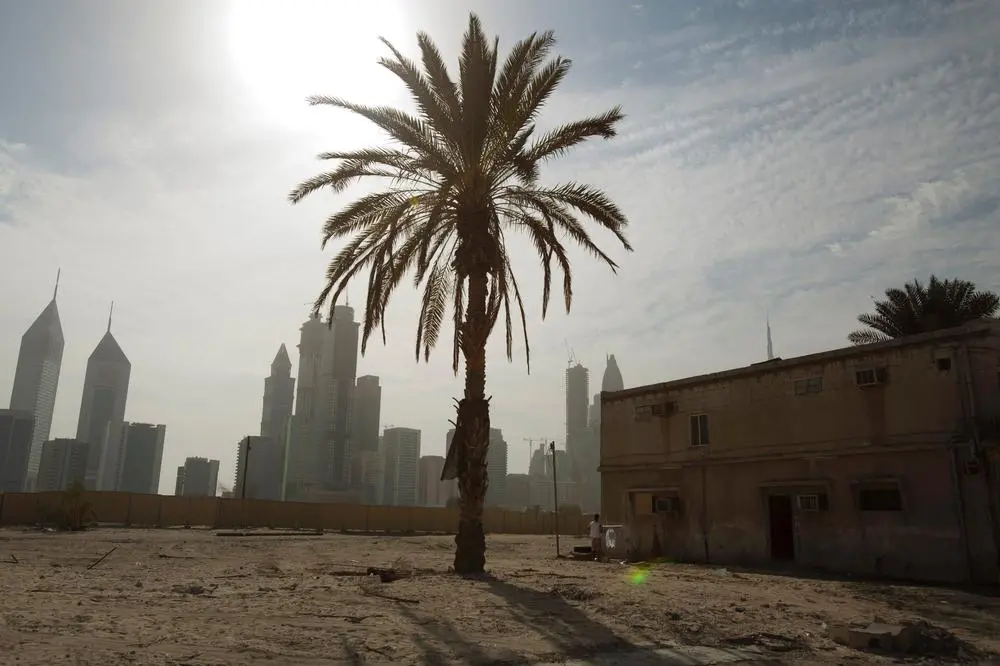PHOTO
Does Dubai offer affordable housing to its residents? The jury is still out on the subject. In 2015, the Dubai Municipality defined affordable housing as a living space for people whose salary is between Dh3,000 to Dh10,000 per month. As a rule of thumb, housing is usually considered affordable if it costs less than 30 per cent of gross household income.
However, in 2014, the average annual expenditure on housing and utilities as a percentage of total household expenditure was higher in Dubai than other major cities, which indicates that many households in Dubai were overburdened by the cost of housing. A more visible sign of the shortage of affordable housing options is the traffic congestion caused by daily commuters, who live in more affordable housing in the northern emirates while working in Dubai.
"Government intervention is needed to provide housing supply for the segment that earns below Dh10,000. Supply for this segment is limited to certain specifications, such as studios and one-bedroom apartments, which is not attractive for families," says Maysa Shocair, managing partner, Affordable Housing Institute.
Although developers have changed tacks to target the mid-income segment, they are still aiming projects at households earning between Dh10,000 to Dh30,000.
According to Cavendish Mawell, in the Dubai homeownership market, 45 per cent of existing units are affordable to households earning up to Dh33,000. Of those, only six per cent is affordable to households earning less than Dh10,000, 16 per cent to households earning less than Dh15,000, 33 per cent to those earning less than Dh25,000 and 45 per cent to those earning up to Dh30,000. The bulk of units available to households earning less than Dh10,000 are studios, with some one-bedroom options available, both unattractive homeownership options for families.
"Our inclusionary zoning policy will make it mandatory for developers to allocate 15 to 20 per cent of every project for affordable housing. We have tools to make sure prices don't go up. We also depend on master developers and sub-developers to make sure affordable housing benefits the right category of people," observes Mahmoud El Burai, CEO of Dubai Real Estate Institute.
It is often observed that affordable housing projects are usually lapped up by investors at the launch phase, who then inflate prices on resale, making the units out of bounds for the mid-income segment.
Almost 82 per cent of the residential transactions in 2017 were below Dh2 million with almost half, or about 47 per cent below Dh1 million. Furthermore, 85 per cent of all transacted units were apartments, a clear choice for budget-sensitive buyers.
Mid-income buyers are also restricted from home ownership owing to the strict mortgage requirements imposed by the UAE Central Bank. There is limited availability of housing finance for those earning below Dh15,000 and the reduced loan-to-value (LTV) ratio (75 per cent for properties below Dh5 million) also poses a challenge. The Central Bank's off-plan financing regulations require buyers to pay 50 per cent of the value of a house before opting for home finance and many households struggle to save the upfront amount required.
"Banks need to educate and make the masses more aware about mortgages available," suggests Mohanad Alwadiya, CEO of Harbor Real Estate.
"There exists an opportunity for banks in the affordable housing segment. The UAE Central Bank needs to liberalise mortgage requirements or offer subsidies for affordable housing," explains Atif Rahman, director and partner, Danube Properties.
Many developers have structured payment plans to respond to these constraints. "Some plans allow buyers to: (i) pay the down payment [50 per cent or less] over an extended period of time; (ii) offer buyers the opportunity to take a 50 to 75 per cent mortgage on the value of the property once it is completed; or (iii) bypass banks and pay developers directly over an extended period," explains a Cavendish Maxwell report.
Developing low-income housing also poses a challenge to developers in the form of high land prices in accessible locations and lower profit margins compared to other assets classes. As a result, developers have been seeking out cheaper land plots in locations further away from city centres to deliver more affordable housing. They are also increasingly offering smaller unit types (studios and one-bedrooms) and smaller sizes of each unit type. To improve space utilisation, some developers are adding modular space-saving furniture that easily changes functions.
"Affordable housing does not mean cheap housing. It is about creating value engineering, economies of scale and negotiating with the supply chain. It should be a matter of best practice for developers rather than one that needs regulation," adds Danube's Rahman.
It is often observed that affordable housing projects are usually lapped up by investors at the launch phase, who then inflate prices on resale, making the units out of bounds for the mid-income segment.
- deepthi@khaleejtimes.com
Copyright © 2017 Khaleej Times. All Rights Reserved. Provided by SyndiGate Media Inc. (Syndigate.info).












